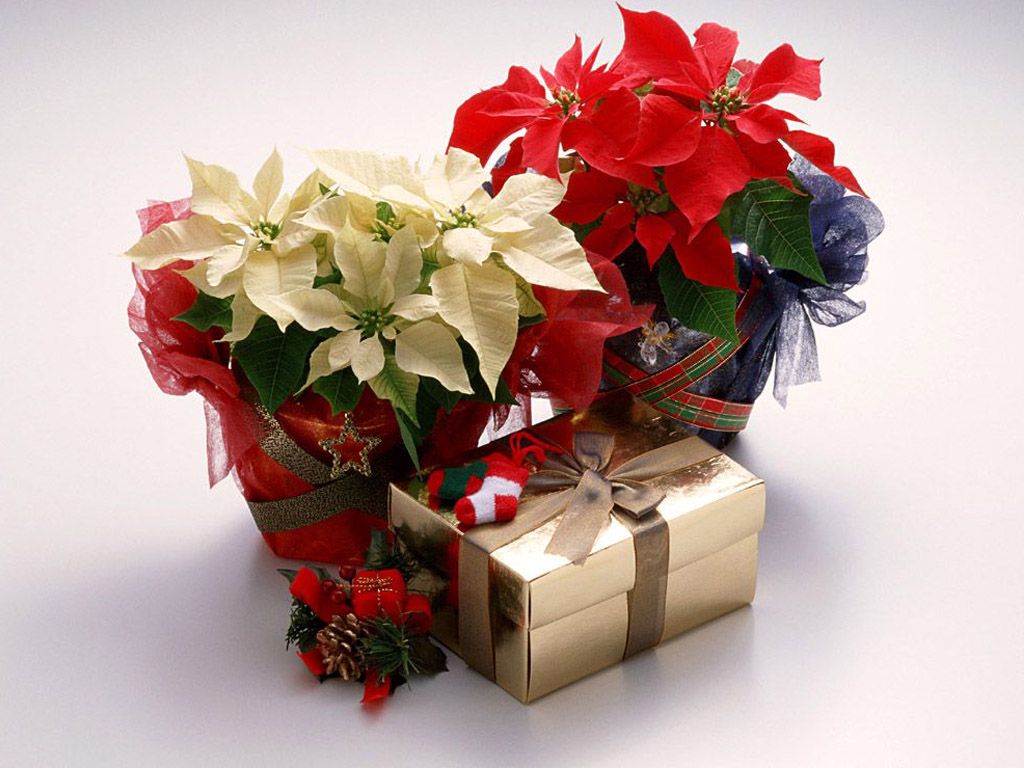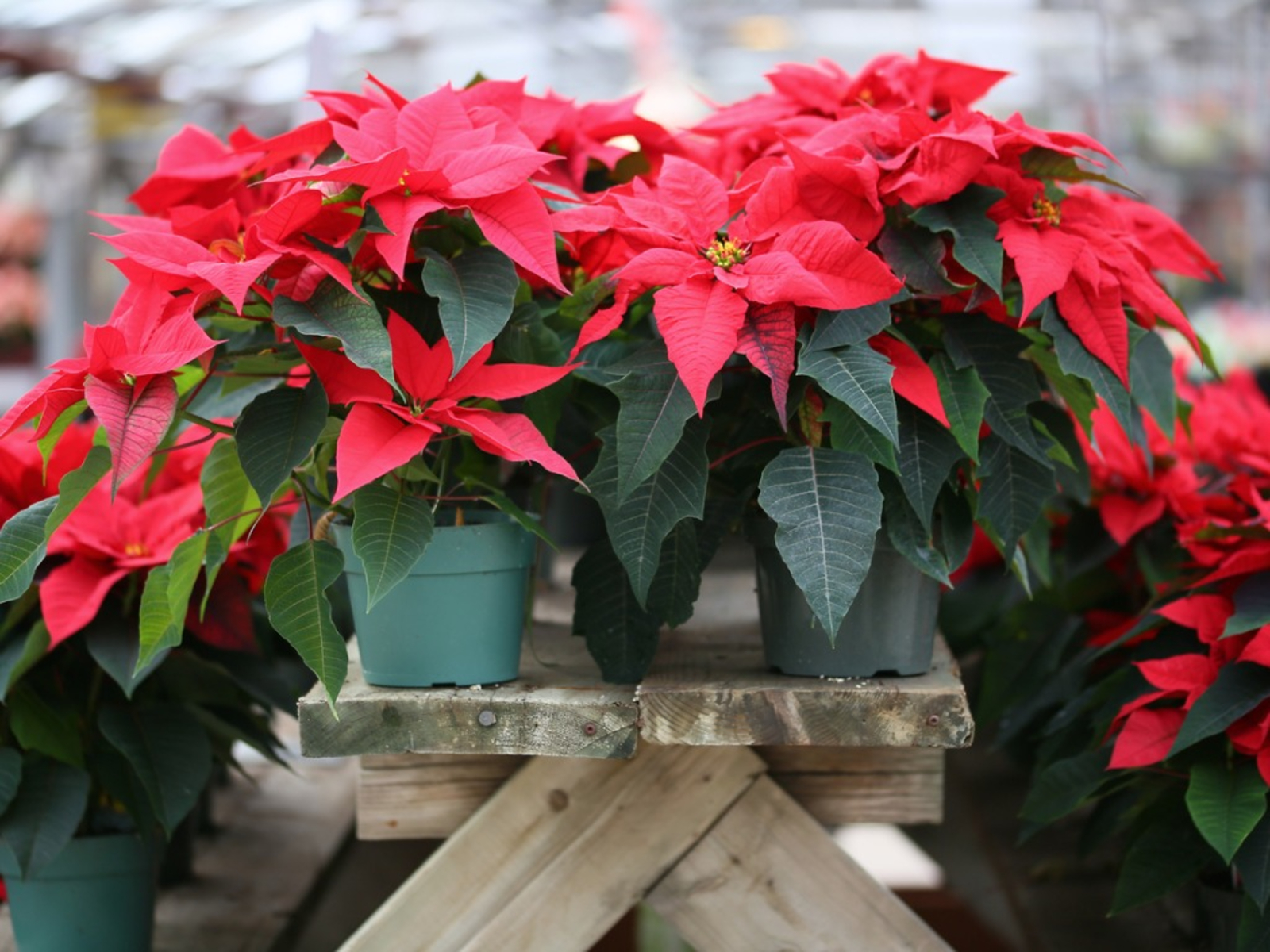Christmas star: everything you need to know
The poinsettia is popularly known as a Christmas flower due to its beautiful red and green colors. It comes from Mexico and other Latin American countries with warm climates, although it adapts very well to higher or lower temperatures.
Although it can bloom at any time of the year, it is in December that its flowering is most abundant, which is why it is used for a wide variety of Christmas decorations. The poinsettia is characterized by having bright green leaves that end in a point, which join the bracts (false flowers) of intense red color. There are also in pink, yellow and white.
Tips for having the best poinsettia
To buy the best poinsettia in the store we have to take into account several aspects. Among these, we must make sure that the bracts do not show any kind of stain, color variation, or any sign of deterioration. For its part, the stem must not have cracks or be broken.
We must also consider all the needs of this plant. So, we also buy a pot according to the size, a good substrate, and some fertilizers. To make an effective purchase, read on as we delve into everything we will need to ensure that our poinsettia always remains beautiful.
Substrate and water for the Christmas flower
The Christmas flower needs a moist substrate to grow properly, which does not mean waterlogging, so be careful with overwatering. During the summer, our plant will need to be watered twice a week to keep the soil moist.
After flowering, the frequency of watering can be reduced to once a week. It is important that when we water we do not wet the leaves or flowers. The correct way is to open a space between them and the water directly on the substrate. Also, remember that the pot we choose must have a drainage system.
Compost for the poinsettia
The poinsettia requires our care to stay beautiful. Among them, it includes a substrate with a variety of nutrients, minerals, and vitamins. We check with the seller which is the best product and remember that organic ones are preferred, as they have a positive impact on the environment.
They will probably recommend a liquid fertilizer, as it is more effective. Applying it every 15 days contributes to rapid growth. Of course, we keep in mind that it is not recommended to apply flower fertilizers when the bracts have started to take on the final color.
Possible Pests and diseases
If we want to decorate our home at Christmas with this flower, the ideal will be that it is beautiful and healthy. Therefore, we must beware of any plague or disease that occurs. Some of the most common pests on this plant are spider mites, mealybugs, aphids, and whiteflies, which usually appear during flowering.
However, there is a solution to these pests and diseases. Just apply an organic or homemade pesticide or insecticide. We can also check in the store which is the most recommended product for this plant.
How to take care of the poinsettia at home
Poinsettia is not a complicated plant to care for at home, with some basic actions on our part it will always remain radiant. Among these aspects, priority must be given to exposure to light, temperature, and pruning, among others. Read on to find out how easy it is to take care of it.
The ideal light for the poinsettia
The poinsettia needs a lot of direct light at certain times of the day. It is best to leave it exposed to the sun for 8 or 9 hours a day. The rest of the day should be placed in a shady space where there is no direct sunlight. This combination of light promotes the growth, budding, and flowering of the leaves.
The ideal temperature
Considering that the Christmas flower comes from warm climate areas, the ideal temperature for it is between 16 and 20 degrees Celsius. Although it can withstand even low temperatures, frost can be very harmful. On the other hand, very hot temperatures wilt and damage the leaves.
Pruning
The best time to prune poinsettia is at the end of January. By that time the plant will have lost most of its leaves and bracts. The first thing to do is to prune the stems to the height of the third bud or about 10 centimeters.
Follow with the smaller branches and seal the cuts with a special healing paste or melted wax. We take the opportunity to check the roots and if they are very abundant, we transplant our poinsettia to a larger pot, fertilize and provide the necessary light.
Consequences of poor care
If we don't provide basic care to our poinsettia, we will get dry, wilted, yellow, and lifeless leaves.
Considering that the leaves speak with their color if our plants are black in color, it means they are rotting and excessive watering could be a cause. If the color is yellow, we can suspect prolonged exposure to heat.
The poinsettia and pets
The poinsettia is beautiful and enhances Christmas decorations, but if we have pets, we should be very careful. This plant contains highly toxic sap due to its latex content, which emerges when the furry bites the leaves and stems.
Experts have found that this liquid is toxic and causes symptoms such as abdominal pain, vomiting, and severe diarrhea in dogs and cats. So the best thing is to place the Christmas flowers in an unreachable place for pets.
Tags : Christmas home home decor Plants



